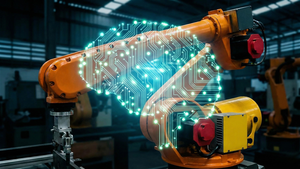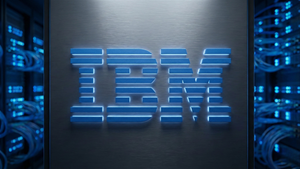
In the relentless march of artificial intelligence, a fundamental truth underpins every groundbreaking advancement: the performance of AI is inextricably linked to the prowess of the semiconductors that power it. As AI models grow exponentially in complexity and capability, the demand for ever more powerful, efficient, and specialized processing units has ignited an "AI Supercycle" within the tech industry. This symbiotic relationship sees innovations in chip design and manufacturing not only unlocking new frontiers for AI but also directly correlating with the market capitalization and investor confidence in AI-focused companies, driving their stock valuations to unprecedented heights.
The current landscape is a testament to how silicon innovation acts as the primary catalyst for the AI revolution. From the training of colossal large language models to real-time inference at the edge, advanced chips are the indispensable architects. This dynamic interplay underscores a crucial investment thesis: to understand the future of AI stocks, one must first grasp the cutting-edge developments in semiconductor technology.
The Microscopic Engines Driving Macro AI Breakthroughs
The technical bedrock of today's AI capabilities lies in a continuous stream of semiconductor advancements, far surpassing the general-purpose computing of yesteryear. At the forefront are specialized architectures like Graphics Processing Units (GPUs), pioneered by companies like NVIDIA (NASDAQ: NVDA), which have become the de facto standard for parallel processing in deep learning. Beyond GPUs, the rise of Tensor Processing Units (TPUs), Neural Processing Units (NPUs), and Application-Specific Integrated Circuits (ASICs) marks a significant evolution, purpose-built to optimize specific AI workloads for both training and inference, offering unparalleled efficiency and lower power consumption. Intel's Core Ultra processors, integrating NPUs, exemplify this shift towards specialized edge AI processing.
These architectural innovations are complemented by relentless miniaturization, with process technologies pushing transistor sizes down to 3nm and even 2nm nodes. This allows for higher transistor densities, packing more computational power into smaller footprints, and enabling increasingly complex AI models to run faster and more efficiently. Furthermore, advanced packaging techniques like chiplets and 3D stacking are revolutionizing how these powerful components interact, mitigating the 'von Neumann bottleneck' by integrating layers of circuitry and enhancing data transfer. Companies like Broadcom (NASDAQ: AVGO) are deploying 3.5D XDSiP technology to create GenAI infrastructure with direct memory connections, dramatically boosting performance.
Crucially, High Bandwidth Memory (HBM) is evolving at a breakneck pace to meet the insatiable data demands of AI. Micron Technology (NASDAQ: MU), for instance, has developed HBM3E chips capable of delivering bandwidth up to 1.2 TB/s, specifically optimized for AI workloads. This is a significant departure from previous memory solutions, directly addressing the need for rapid data access that large AI models require. The AI research community has reacted with widespread enthusiasm, recognizing these hardware advancements as critical enablers for the next generation of AI, allowing for the development of models that were previously computationally infeasible and accelerating the pace of discovery across all AI domains.
Reshaping the AI Corporate Landscape
The profound impact of semiconductor innovation reverberates throughout the corporate world, creating clear winners and challengers among AI companies, tech giants, and startups. NVIDIA (NASDAQ: NVDA) stands as the undisputed leader, with its H100, H200, and upcoming Blackwell architectures serving as the pivotal accelerators for virtually all major AI and machine learning tasks. The company's stock has seen a meteoric rise, surging over 43% in 2025 alone, driven by dominant data center sales and its robust CUDA software ecosystem, which locks in developers and reinforces its market position.
Taiwan Semiconductor Manufacturing Company (NYSE: TSM), as the world's largest contract chipmaker, is an indispensable architect of this revolution. Its technological prowess in producing advanced chips on leading-edge 3-nanometer and upcoming 2-nanometer process nodes is critical for AI models developed by giants like NVIDIA and Apple (NASDAQ: AAPL). TSMC's stock has gained over 34% year-to-date, reflecting its central role in the AI chip supply chain and the surging demand for its services. Advanced Micro Devices (NASDAQ: AMD) is emerging as a significant challenger, with its own suite of AI-specific hardware driving substantial stock gains and intensifying competition in the high-performance computing segment.
Beyond the chip designers and manufacturers, the "AI memory supercycle" has dramatically benefited companies like Micron Technology (NASDAQ: MU), whose stock is up 65% year-to-date in 2025 due to the surging demand for HBM. Even intellectual property providers like Arm Holdings (NASDAQ: ARM) have seen their valuations soar as companies like Qualcomm (NASDAQ: QCOM) embrace their latest computing architectures for AI workloads, especially at the edge. This intense demand has also created a boom for semiconductor equipment manufacturers such as ASML (NASDAQ: ASML), Lam Research Corp. (NASDAQ: LRCX), and KLA Corp. (NASDAQ: KLAC), who supply the critical tools for advanced chip production. This dynamic environment is forcing tech giants to either innovate internally or strategically partner to secure access to these foundational technologies, leading to potential disruptions for those relying on older or less optimized hardware solutions.
The Broader AI Canvas: Impacts and Implications
These semiconductor advancements are not just incremental improvements; they represent a foundational shift that profoundly impacts the broader AI landscape. They are the engine behind the "AI Supercycle," enabling the development and deployment of increasingly sophisticated AI models, particularly in generative AI and large language models (LLMs). The ability to train models with billions, even trillions, of parameters in a reasonable timeframe is a direct consequence of these powerful chips. This translates into more intelligent, versatile, and human-like AI applications across industries, from scientific discovery and drug development to personalized content creation and autonomous systems.
The impacts are far-reaching: faster training times mean quicker iteration cycles for AI researchers, accelerating innovation. More efficient inference capabilities enable real-time AI applications on devices, pushing intelligence closer to the data source and reducing latency. However, this rapid growth also brings potential concerns. The immense power requirements of AI data centers, despite efficiency gains in individual chips, pose environmental and infrastructural challenges. There are also growing concerns about supply chain concentration, with a handful of companies dominating the production of cutting-edge AI chips, creating potential vulnerabilities. Nevertheless, these developments are comparable to previous AI milestones like the ImageNet moment or the advent of transformers, serving as a critical enabler that has dramatically expanded the scope and ambition of what AI can achieve.
The Horizon: Future Silicon and Intelligent Systems
Looking ahead, the pace of semiconductor innovation shows no signs of slowing. Experts predict a continued drive towards even smaller process nodes (e.g., Angstrom-scale computing), more specialized AI accelerators tailored for specific model types, and further advancements in advanced packaging technologies like heterogeneous integration. The goal is not just raw computational power but also extreme energy efficiency and greater integration of memory and processing. We can expect to see a proliferation of purpose-built AI chips designed for specific applications, ranging from highly efficient edge devices for smart cities and autonomous vehicles to ultra-powerful data center solutions for the next generation of AI research.
Potential applications on the horizon are vast and transformative. More powerful and efficient chips will unlock truly multimodal AI, capable of seamlessly understanding and generating text, images, video, and even 3D environments. This will drive advancements in robotics, personalized healthcare, climate modeling, and entirely new forms of human-computer interaction. Challenges remain, including managing the immense heat generated by these powerful chips, the escalating costs of developing and manufacturing at the bleeding edge, and the need for robust software ecosystems that can fully harness the hardware's capabilities. Experts predict that the next decade will see AI become even more pervasive, with silicon innovation continuing to be the primary limiting factor and enabler, pushing the boundaries of what is possible.
The Unbreakable Link: A Concluding Assessment
The intricate relationship between semiconductor innovation and the performance of AI-focused stocks is undeniable and, indeed, foundational to the current technological epoch. Chip advancements are not merely supportive; they are the very engine of AI progress, directly translating into enhanced capabilities, new applications, and, consequently, soaring investor confidence and market valuations. Companies like NVIDIA (NASDAQ: NVDA), TSMC (NYSE: TSM), AMD (NASDAQ: AMD), and Micron (NASDAQ: MU) exemplify how leadership in silicon technology directly translates into economic leadership in the AI era.
This development signifies a pivotal moment in AI history, underscoring that hardware remains as critical as software in shaping the future of artificial intelligence. The "AI Supercycle" is driven by this symbiotic relationship, fueling unprecedented investment and innovation. In the coming weeks and months, industry watchers should closely monitor announcements regarding new chip architectures, manufacturing process breakthroughs, and the adoption rates of these advanced technologies by major AI labs and cloud providers. The companies that can consistently deliver the most powerful and efficient silicon will continue to dominate the AI landscape, shaping not only the tech industry but also the very fabric of society.
This content is intended for informational purposes only and represents analysis of current AI developments.
TokenRing AI delivers enterprise-grade solutions for multi-agent AI workflow orchestration, AI-powered development tools, and seamless remote collaboration platforms.
For more information, visit https://www.tokenring.ai/.








